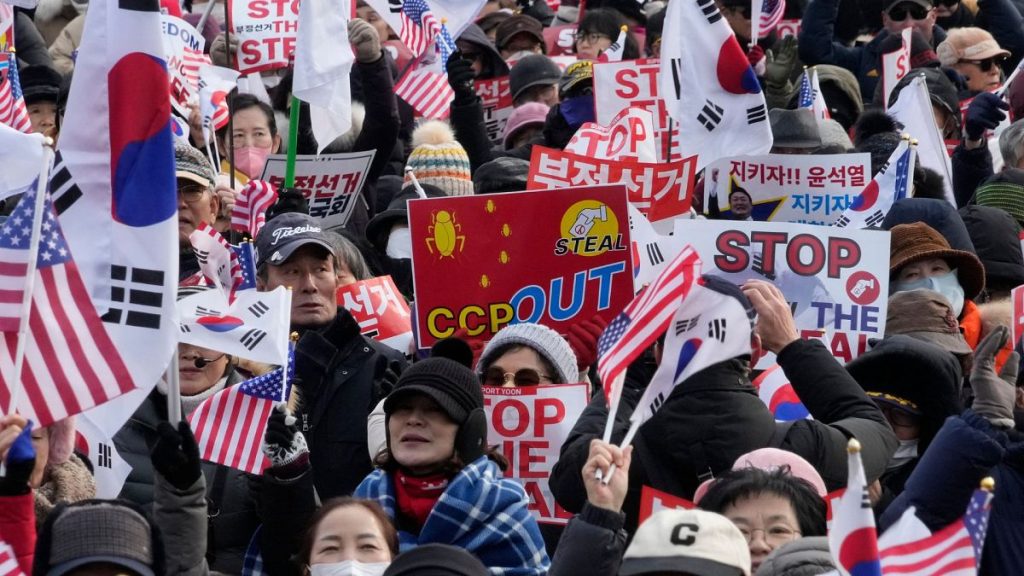The political crisis in South Korea surrounding impeached President Yoon Suk-yeol deepened as his legal team challenged the legitimacy of a new arrest warrant, accusing authorities of manipulating the judicial process. Yoon’s lawyers contend that the Corruption Investigation Office for High-Ranking Officials (CIO), which is spearheading the investigation into Yoon’s actions, lacks the authority to investigate rebellion charges, the very basis for the warrant. They argue that the CIO overstepped its bounds by instructing the police to detain Yoon and should instead either indict him or seek a formal arrest warrant through the proper channels, which would involve a court hearing. Furthermore, they claim the CIO strategically chose the Seoul Western District Court, alleging bias in favor of the prosecution, to obtain the warrant, insisting that only a warrant issued by the Seoul Central District Court would be respected. This stance, however, is complicated by the lawyers’ ambiguous response regarding Yoon’s potential appearance at a Central District Court hearing, citing unresolved security concerns.
The core issue revolves around Yoon’s declaration of martial law on December 3rd and subsequent deployment of troops around the National Assembly, actions that triggered his impeachment by the National Assembly on December 14th. Yoon is being investigated for rebellion, a serious charge with significant implications. He has consistently refused to comply with summons for questioning, leading to the issuance of the initial, unsuccessful detention warrant. The new warrant further escalates the tension between the executive branch, now represented by Acting President Choi Sang-mok, and the investigative and judicial bodies pursuing the case. The standoff at Yoon’s residence last Friday, where his security detail successfully repelled an attempt by investigators and police to detain him, underscores the potential for physical confrontation and further instability.
The political dynamics at play involve the Democratic Party, which spearheaded Yoon’s impeachment, and which now accuses his legal team of employing delaying tactics to obstruct justice. They urge a swift resolution to the crisis. Meanwhile, Acting President Choi Sang-mok walks a tightrope, emphasizing the need to avoid violence and injuries during any future detainment attempts. He faces pressure from both sides, needing to uphold the rule of law while also navigating the sensitive political landscape and potential security risks. The reinforcement of Yoon’s compound with barbed wire and vehicles, coupled with the security detail’s previous resistance, suggests a preparedness for further confrontation, raising concerns about a potential escalation of the situation.
Adding another layer of complexity is the accusation by CIO chief prosecutor Oh Dong-woon against Acting President Choi. Oh suggests that Choi’s advice to bolster security at Yoon’s residence prior to the initial detainment attempt amounted to obstruction of justice, and that the CIO is actively reviewing the matter. This accusation raises questions about potential political interference and could further complicate the relationship between the executive branch and the investigative bodies. The situation is further complicated by the political climate and public opinion, with daily protests occurring outside Yoon’s residence by both his supporters and detractors, highlighting the deeply divided nature of the political landscape.
The legal arguments presented by Yoon’s team essentially question the jurisdiction and impartiality of the bodies pursuing him. They claim that the CIO lacks the authority to investigate rebellion charges and that the Seoul Western District Court is biased. This strategy aims to delegitimize the legal process and potentially delay or even avoid prosecution. However, their reluctance to confirm Yoon’s compliance with a warrant from what they deem a legitimate court, the Seoul Central District Court, introduces an element of ambiguity and raises questions about their commitment to cooperation with the legal process.
The overarching narrative is one of a power struggle, with the impeached president refusing to cooperate with an investigation into his actions, his legal team challenging the legitimacy of the process, and the investigative bodies determined to pursue the case despite potential resistance. The acting president is caught in the middle, trying to maintain order and avoid violence while navigating the complex legal and political ramifications of the situation. The ongoing protests and the potential for further physical confrontations create a volatile environment with unpredictable consequences for the country’s political stability.














